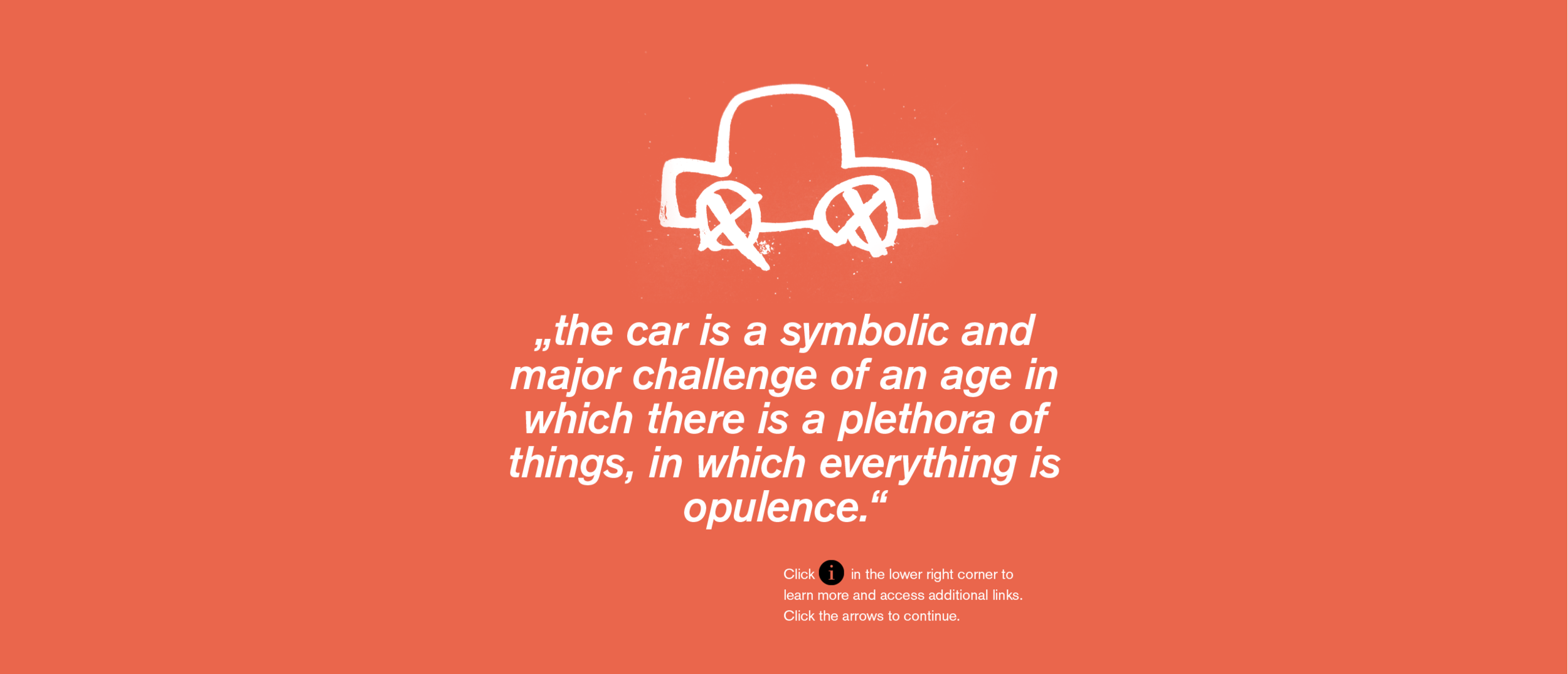
In April 2013 Toyota presented a conceptual vehicle that was realised with french designer and architect Jean-Marie Massaud.
The Toyota MeWe is described as an 'anti-crisis' car, as a responsible approach to designing a rational, yet emotional and semiotically pleasing answer to mobilityneeds of today's customers. But all that on the conceptual backdrop of the global financial crisis.
Massaud specifically saw the challenge and motivation for this project in formulating a vehicledesign as a tangible comment to our consumerist ideals - resulting in a product mirroring our contemporary sociocultural attitude towards consumption.
With his designs Massaud thrives for a holistic philisophy that does not necessarily anticipate technological progress as a betterment, but instead seeks to improve the human condition. He does not want to counter ecological and economical problems with more ecological technology, but with an ideal of edcuating the people that use his designs and equip them with an elevated cultural awareness of their surroundings. And not just supply them with "better" objects.
He explains that already available and proven technology should be part of a transparent architecture - like aluminium spaceframes, or electric wheel hub motors. These packaging decisions all seek to minimize the complexity of both the exterior and interior architecture, making the vehicle smaller, while carving out more space for the passengers. The inclusion of recyclabe cyclic materials in foamed polyethylen bumperpads on the outer shell, wood throughout the floor and interiorsurfaces as well as the exclusion of non-crisis conform features like air conditioning in favor of retractable windshields make the concept lean, yet livable - modern, one could say.
It is especially necessary to emphasise the waiving of an dysfunctional sheet metal bodywork - that was replaced by bumpers made of recycled plastic. So, ultimately, the transparent architecture, based in actual societal circumstances, together with a unbiased approach to vehicular design resulted in a concept car much more tangible and relevant to nowaday's consumers' needs and lives, than what the existing market seems to offer.
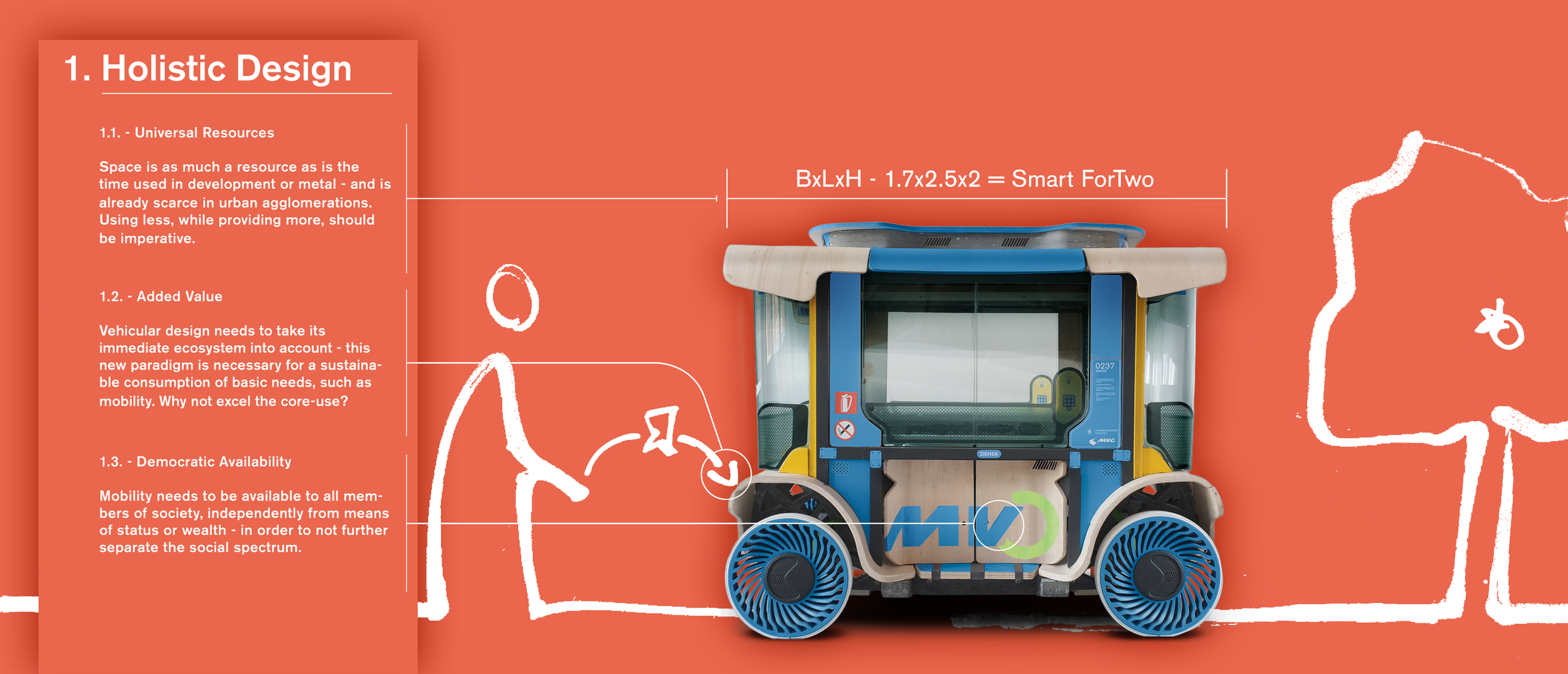
This project aims to design a speculative means of individual transportation with autonomous electric drive in shared, public use for the city of Munich. Special attention is paid to regional production, lifecycles of wearing parts and the interdependencies of the vehicle and its surrounding system - the city.
Clean hybrid or electric drive, autonomous vehicles, shared use and everything fueled by energy from sustainable sources - these are to be the ingredients for the „automotive revolution“ - but there‘s far more to a sustainable and relevant vehicle than that.
The interdependencies between modern cities and the surrounding regions are not negligible - the social and everyday requirements on mobility in urbanization have significant impact on culture and societal structure.
Statistically, Cars seal urban space during 23 hours of the day - by being parked. And even during their single hour of daily operation, they negatively effect the living quality of their surroundings with noise- and dirt pollution. This very space is already rare in today‘s cities. So it would be a necessity to design vehicles with utmost respect to the limited resources - not only in terms of materials used in manufacture, but also in universal resources as space, time and quality of life.
A sustainable future architecture of mobility has to take into account these demographic realities - and use them as a framework, a specification book to facilitate societal change - by design.
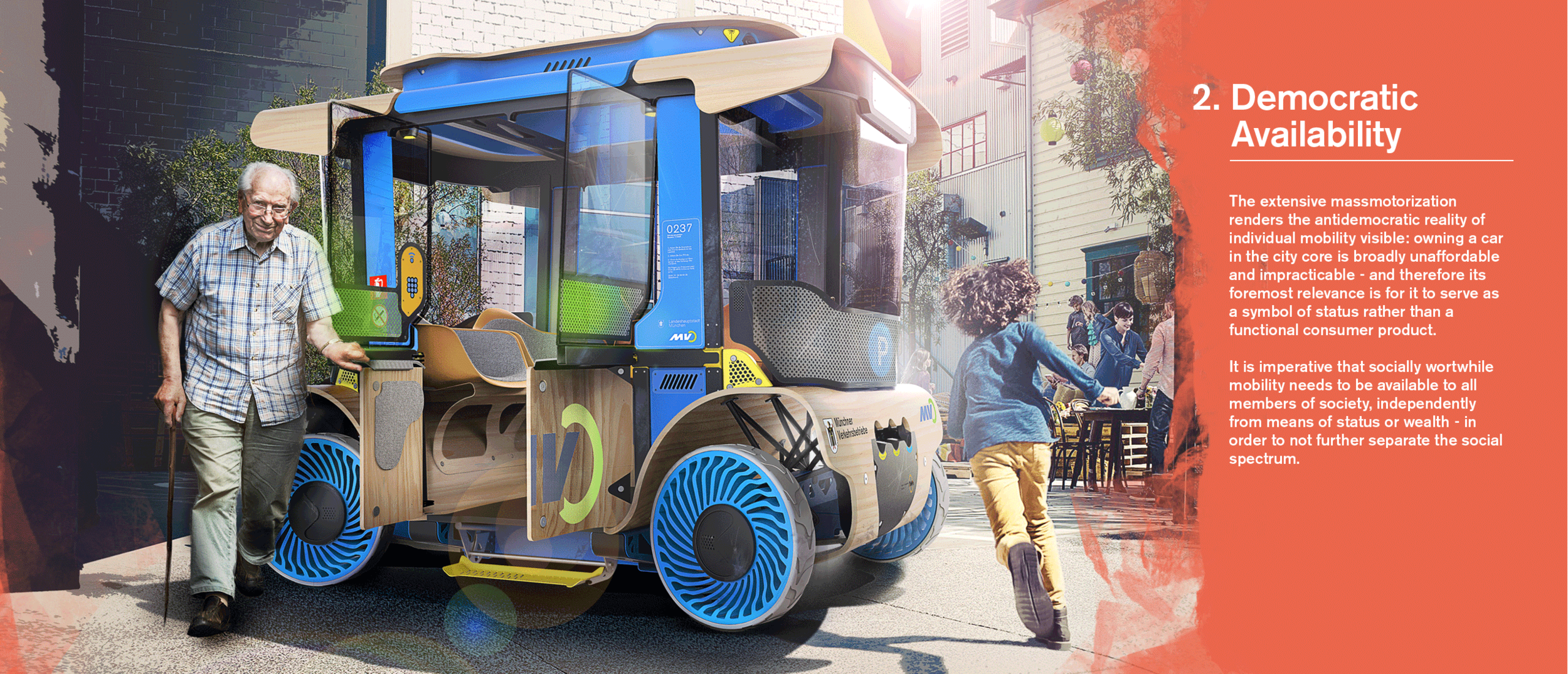
In increasingly car-hostile city centres the gap between micromobility - like bicycles - and short-range public transportation has to be bridged with another means of individual mobility.
The ubiquitous connectedness via the technical advancements of the mobile internet have already entailed socially and commercially oriented sharingconcepts. These are usually only limited to integration into the prevalent intermodal mobilityprofiles and their differentiation on the market thus hinders their actual practicability.
Analogously, the extensive massmotorization renders the antidemocratic reality of individual mobility visible: owning a car in the city core is broadly unaffordable and impracticable - and therefore its foremost relevance is for it to serve as a symbol of status rather than a functional consumer product. It is imperative that socially wortwhile mobility needs to be available to all members of society, independently from means of status or wealth - in order to not further separate the social spectrum.
Ultimately that means that - if we decide to allow car-like vehicles in future cities - these mobility solutions must be an integral part of a multimodal regional transport solution. Together with expanding biycycle mobility, short- and long-range public transportation and potentially other sharing-services this vehicle and its system should be in public hand.
And now - considering this massively expanding pool of people suddenly capable of experiencing advanced individual mobility - what are the design challenges if we want to design mobility services, for instance, for kids, the elderly or handicapped persons?
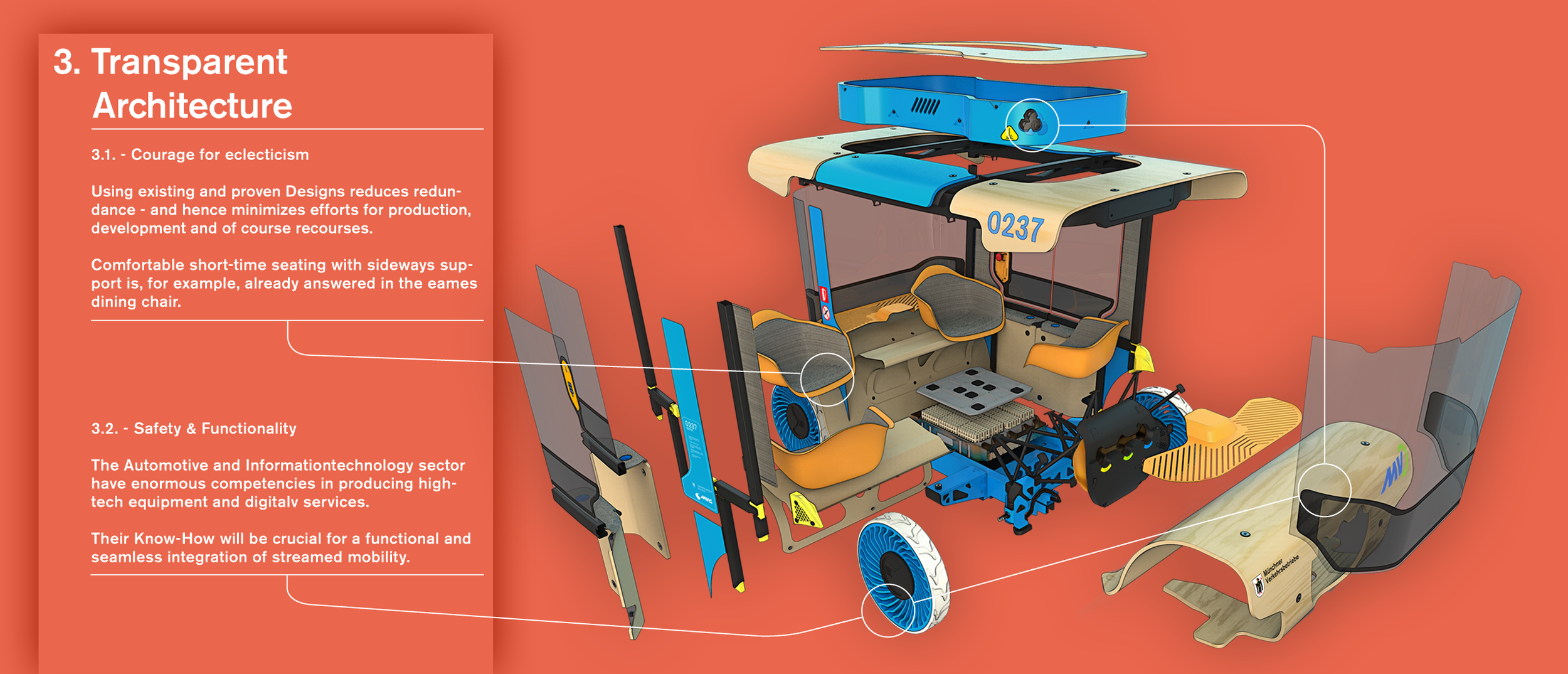
The anachronistic nature of the contemporary car reveals itself clearly in relevant real scenarios of collective consumerism. In times of trends aimed at responsible consumption of virtually every branch of product or service available, the current manifestation of individual mass-mobility fails to deliver. While car sharing as a flexible mode of mobility within cities continually evolves into a viable solution for everybody’s mobility needs that go beyond what bipedal, public or mobility by bike can provide, one should assume that the product that was usually consumed individually, should perfectly work on the societal scale.
It does not. The functionality of the exterior and interior designs observable in today’s cars show its inherent lack of viability, especially when looking at the very basic requirements.
Cautiously arranged macroarchitecture, the overall set-up of seating, necessary mechanical interfaces like steering, gear shift, etc are not only delicately formally developed but also constructed with multiple parts in different material finishes. This of course is due to the overall identity the car has to convey, considering its brand, desired price range and other widely additive meaning the components and, ultimately, their higher-order composites - cars, streets, traffic jams, junk yards - accumulate.
The result - sharing a compact SUV BMW X1 for obvious reasons like hauling bulky goods in urban areas without having to own a car and dealing with subsequent problematics like running costs, parking spaces and cleaning rims, becomes utterly unsatisfying.
Why? Because the handed down modes of interaction with what was usually paid for individually and hence cared for with utmost caution as to preserve its value causes psychological distress - especially if you share the product. This awe for spectacularly formed injection molded plastic does direct the attention towards decoration rather than purposefulness.
Frankly speaking, this decoration and deep respect for the immense effort in creating it, forming a mental value that transcends the actual material manifestation in a very profane polyethylen component, is detrimental to its functionality. Why? Because people are afraid to use it and face the unalterable possibility of producing signs of usage.
Now BMW tries to tackle the problem of wear by using basic all-black interiors and applying foils on the body parts to protect or ultimately substitute the delicate lacquer - but still has to remove cars from active service in its car sharing pool after just over a year of use.
The exclusion of impermanence is, on ecological as well as on conceptual scale, a sign of distinct vanity. It becomes apparent in microscopic perspective throughout the selection of material, its design into decorative forms, resulting in their dysfunctional accumulation in cars, which, as a whole self-preserving industrial system only foster this status quo for decades to come. This perfectly pictures the inherent morality of consumerism in the second half of the 20th century - that has undergone change.
This comment should serve as a conceptual foundation to strip a design, aimed to satisfy a basic need, of all hypocritical styling. Styling, calling itself Design, that tries to be "more individual" or "tailored" to the customer - but instead patronizes him with sensory overload, produces waste with every faceliftcycle and hinders an actual communication of the product to the human being.
Because of these sociocultural necessities, as well as ecological and economic viability, the visual appearance of the automotive revolution will have to be more honest and trasnparent in communciacting it's architecture - meaning the object has to convey:
The way it was made,
by whom it was made,
with what it was made and
for what it was made.
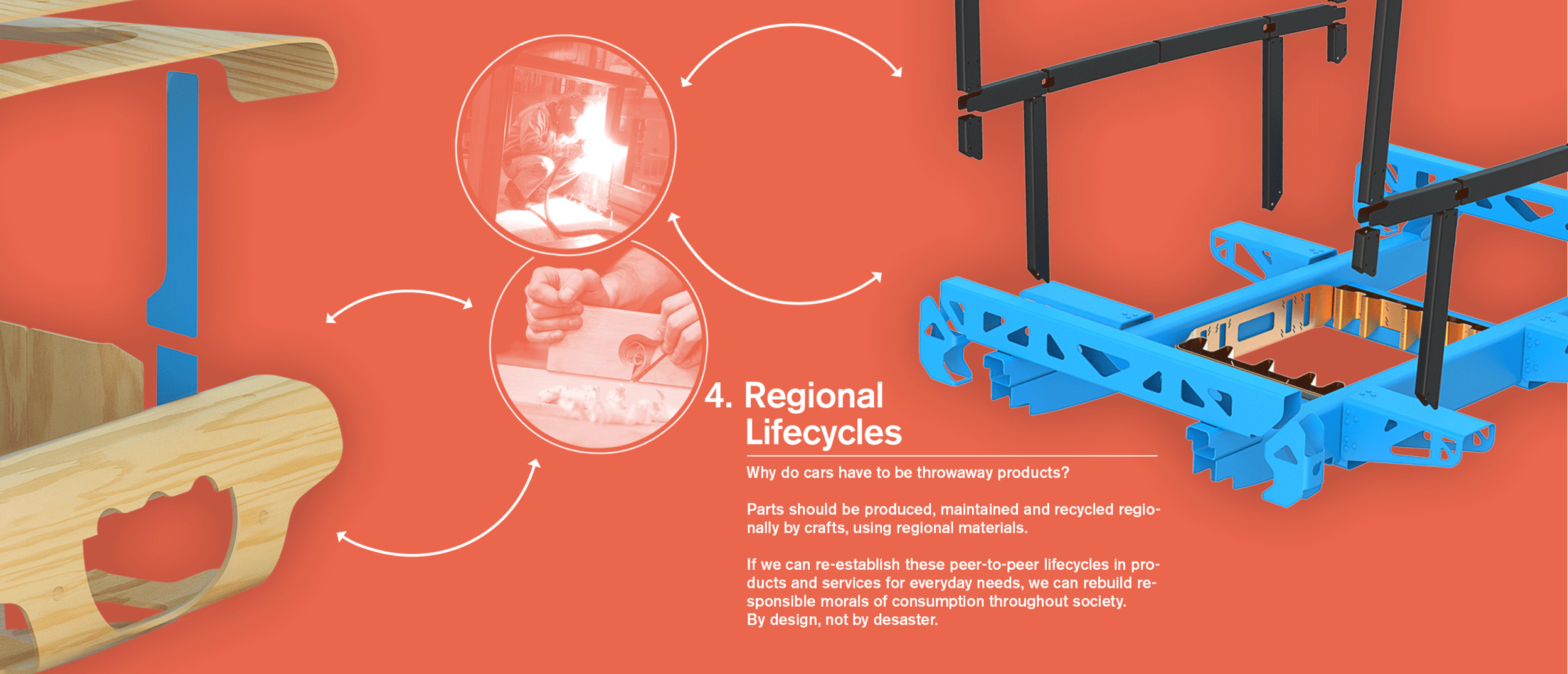
Matter is continuously transformed - considering this cosmic life-cycle, speaking of „wearing parts“ is not only wrong, but also irresponsible.
In other words - components that themselves are not of cyclic nature - meaning they are not reparable and maybe even harmful to the environment in their desolate state - can not be part of a sustainable product. To ensure sustainable regional growth among all social levels, demographic realities that established throughout industrial- and urbanization need to be tackled by employing resources in the immediate proximity of where those parts need to be made and most importantly maintained and recycled.
For example plywood used for covers and structural parts, as well as metal constructions should be produced by regional craftsmen. The plastics should be sourced from regional trash and upcycled to single-origin quality.
If we manage to regionalize the lifecycle of components that otherwise would be produced in globalized manner and trashed when broke, it becomes possible to reintegrate an economical and thus social relationship between urban, suburban and rural regions.
Urbanization has weakened the regions arround cities demographically. The economy is deliberately seeking for educated workers. Crafts like carpentry or metal works are reporting overdue progeny.
These results of the megatrend Urbanization - migration to urban areas, socially disintegrated crafts and urban sprawl - have negative effects on a competitive, diverse economy, decentralise resource flow and carry away the immediate understanding of produce and consumption by further alienating the various stakeholders throughout product development.
Integrating these people into the creation of their own regional mobility makes their means of transport more tangible throughout their lives than any conventional car, through consumption, could ever do.
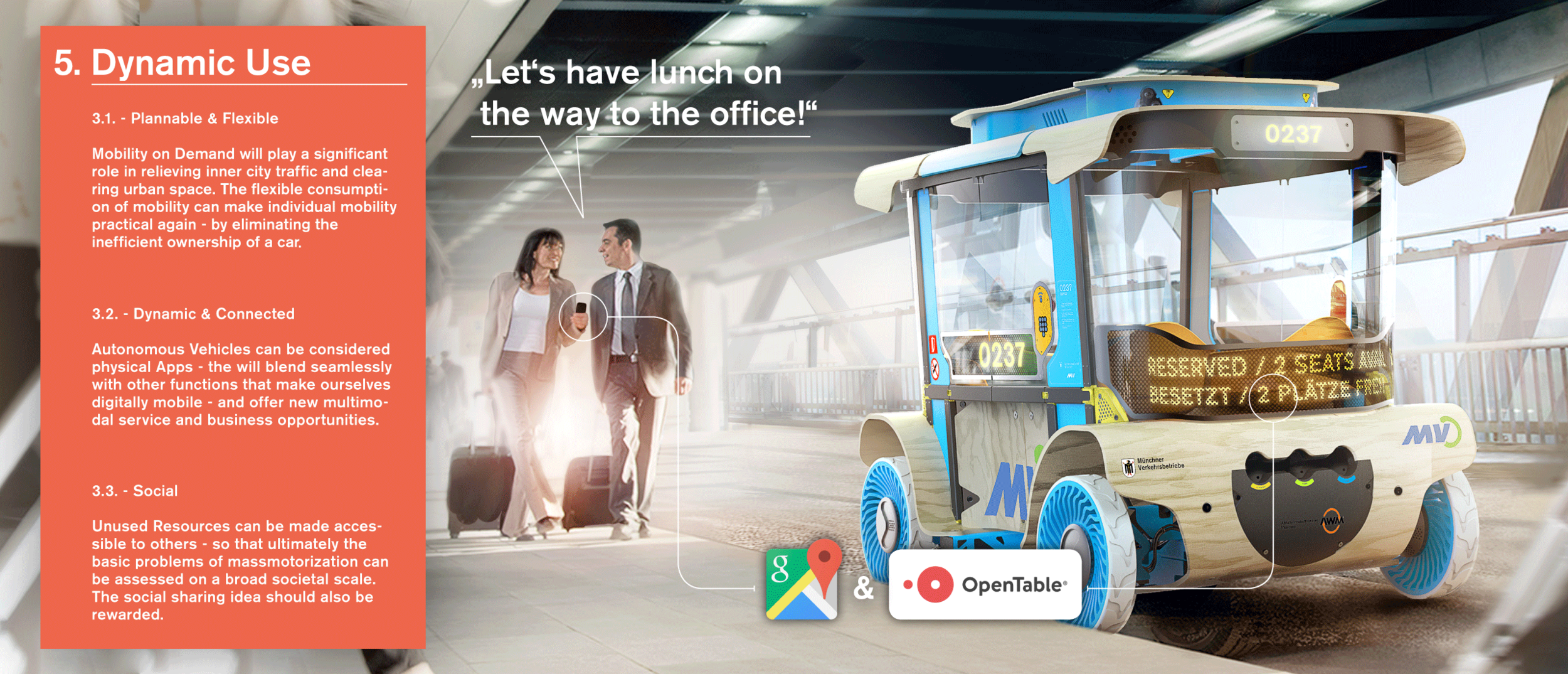
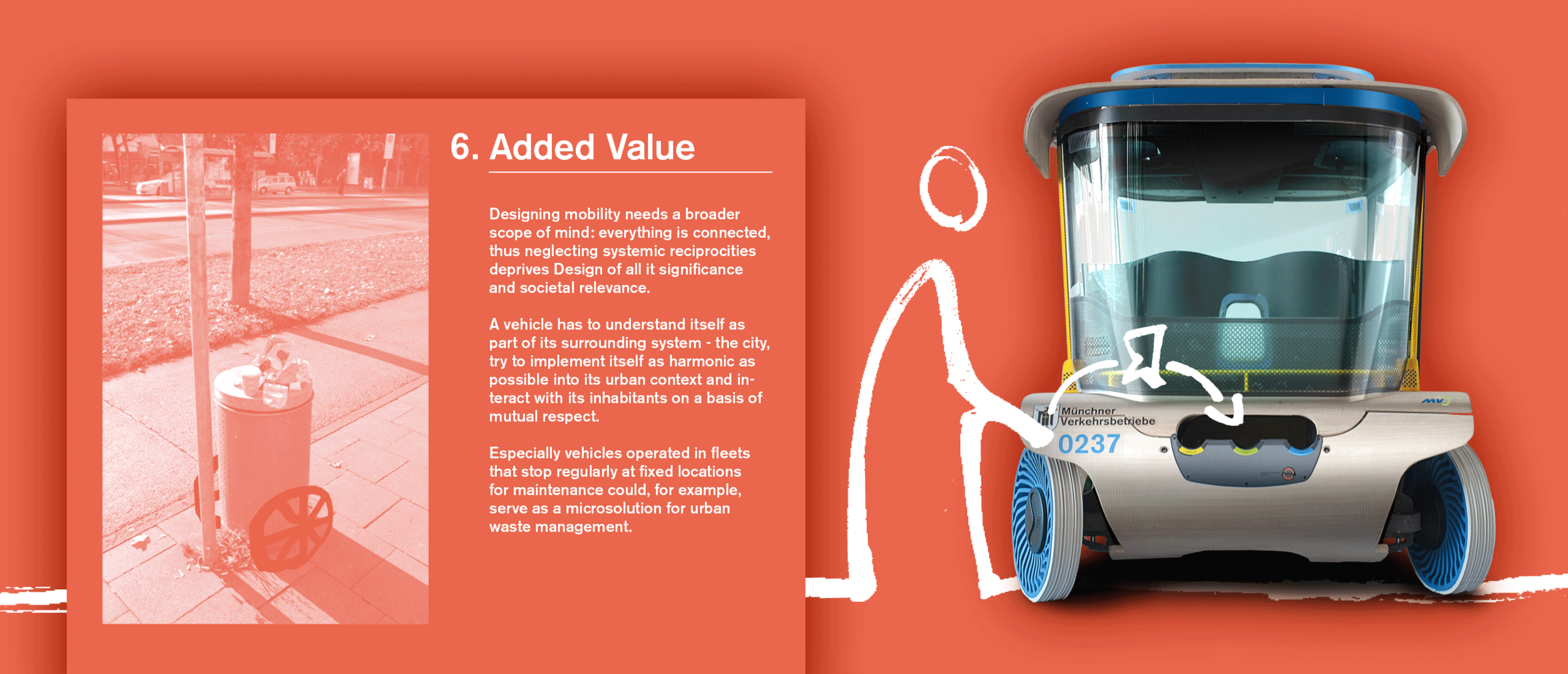
What now?







